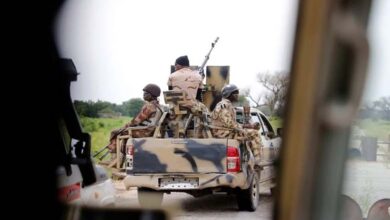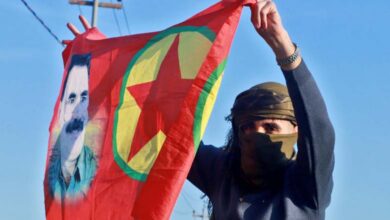The screen is more dangerous than the weapon… terrorist propaganda from training camps to artificial intelligence

The global landscape following the attacks of September 11, 2001 prompted American terrorism researcher Brian Jenkins to reconsider his famous 1974 statement that terrorist groups “want a lot of people watching, not a lot of people dead.”
However, in 2006, Jenkins wrote, in the context of his analysis of Al-Qaeda, that “many terrorists today want a lot of people watching and a lot of people dead” – a reflection of the major shift in extremist violence over the past two decades, as reported by The Telegraph.
From early Internet platforms to modern propaganda tools
Although these groups often claim inspiration from seventh-century models, they have consistently been among the earliest adopters of modern technology to expand their messaging and promote violence.
Since the 1990s, these organizations have sought to exploit every available media tool to reach broader audiences.
For example, before most British households even had Internet access, the website “Azzam Publications”, operated from Tooting in London, was already publishing extremist texts alongside video footage of Russian soldiers captured in Chechnya.
With the onset of the “War on Terror”, filmed executions of Western hostages – such as American journalist Daniel Pearl in 2002 and Briton Ken Bigley in 2004 – spread widely, demonstrating the ability of these groups to create global shockwaves using relatively simple media tools.
The rise of professional terrorist propaganda
The evolution extended beyond video production. Extremist groups quickly merged traditional ideological discourse with modern design and visual production techniques. One notable example is that of American Jesse Morton, a former extremist who later repented, and who used his website “Revolution Islam” to threaten the creators of the show “South Park” and incite followers across the world.
In France, former criminal Omar Omsen from Nice reinvented himself as a preacher producing homemade “documentaries” that attracted large audiences on YouTube. Omsen remains in Syria with around 200 followers, who participated last year in the latest attack on Damascus.
Later, ISIS elevated propaganda to an unprecedented level of professionalism, sparking global concerns about online radicalization. One of the most impactful examples was the execution of American journalist James Foley by British fighter Mohammed Emwazi, known as “Jihadi John”, which prompted major Silicon Valley companies to revise their content policies immediately.
Terrorist groups enter the era of artificial intelligence
Today, with the expansion of artificial intelligence technologies, terrorist groups have begun exploring their capabilities. Reports suggest that ISIS and its media arms are using AI to speed up the translation of propaganda materials and broaden their global reach.
However, this experimentation has not been free of errors. According to BBC Monitoring, the group produced AI-generated news bulletins showcasing its “achievements”, but one version mistakenly displayed the face of the virtual presenter, a violation of the group’s strict ideological rules.
Concerns are also growing among sympathizers about the potential of deepfake technologies to spread discord and fuel divisions.
Despite their enthusiasm for technology, these groups – like many companies and governments – have not yet reached the stage of fully exploiting the capabilities of artificial intelligence.
Artificial intelligence… a double-edged sword
Counterterrorism experts warn against overestimating the ability of terrorist groups to harness artificial intelligence, as doing so could divert attention away from traditional security analysis and intelligence work.
Conversely, AI offers authorities powerful tools, including monitoring and regulating terrorist content on digital platforms, detecting complex patterns that are difficult for humans to identify, and analyzing or translating vast quantities of data, speeches and documents within minutes instead of months of manual labor.












